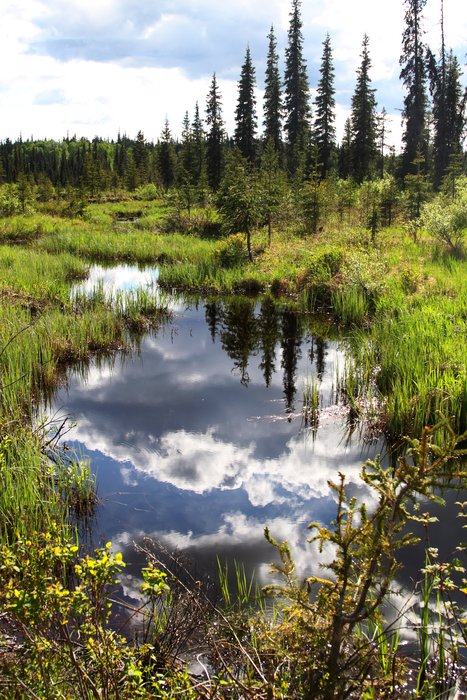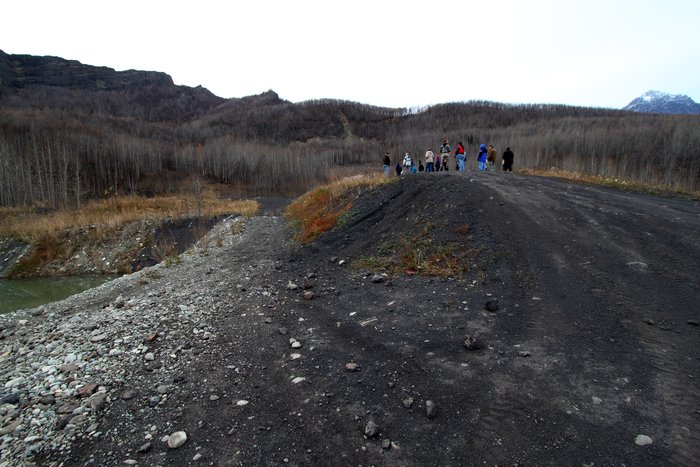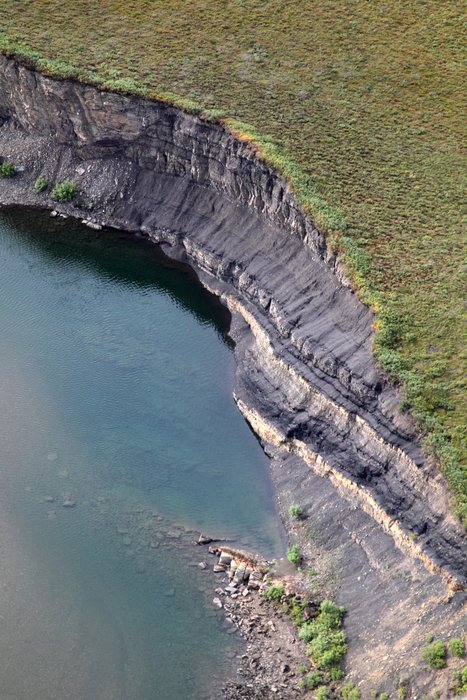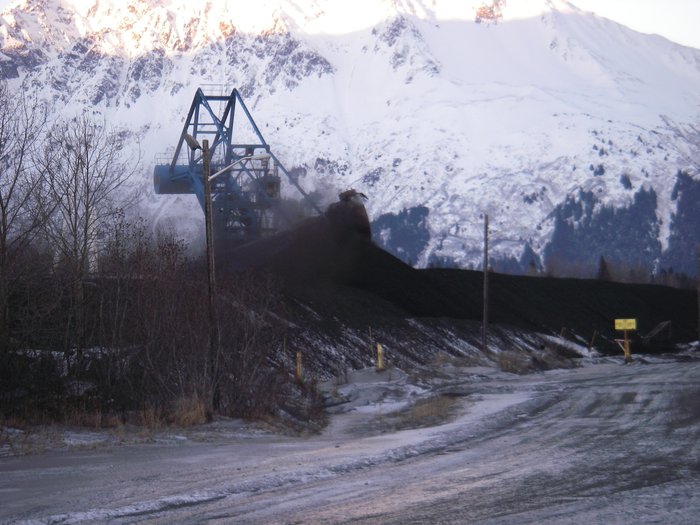
- Chuitna Coal Mine
- Wishbone Hill Coal Mine
- Coal Power in Alaska
- Coal to Liquids
- Arctic Coal
- Coal Pollution
- Other Projects
- Global Impacts and Broader Opposition
Chuitna Coal Mine
Wishbone Hill Coal Mine
Coal Power in Alaska
Coal to Liquid (CTL)
Arctic Coal
Coal Pollution
* Resurrection Bay Conservation Alliance * Trustees for Alaska * Alaska Community Action on Toxics * Alaska Center for the Environment * Earthjustice * ### Other Projects
To date, coal in Alaska has generated much less controversy than other resource issues such as oil or metals mining. The coal industry in the state is quite small, and coal provides only a small percentage of the state’s energy. Few people are aware of Alaska’s vast coal resources.
However, recent mine proposals have have sparked a significant opposition effort, particularly PacRim Coal’s proposed Chuitna Coal Project, and Usibelli’s proposed Wishbone Hill Mine. Other opposition efforts have focused on the problem of coal dust pollution in Seward, and in fighting proposals for coal-fired power plants such as the Healy Clean Coal Plant.
Opposition efforts to particular projects have been driven by a combination of local groups, citizens, and Alaskan conservation organizations. National involvement has been limited. Concerns raised have primarily focused on local environmental degradation, effects on subsistence harvesting, health effects, property values and the negative economic result of these impacts.

Chuitna Coal Mine
The Chuitna Coal Mine is a proposal for a large open pit coal mine on the west side of Cook Inlet, near the communities of Tyonek and Beluga. Concerns of mine opponents have focused on the impacts to salmon; in the spawning streams that will be destroyed by the mine, and on the Chuit River downstream. They charge that reclaiming this complex habitat of wetlands to anything resembling its current ecosystem function after mining would be impossible, and that salmon and other wildlife would be irreparably harmed. Local residents have a litany of additional worries, including coal dust pollution from the conveyor and coal stockpile, and impacts on their subsistence, sport, and commercial fishing. Opposition has been led by the Chuitna Citizens Coalition (a group of local residents), and the conservation groups Cook Inletkeeper, the Alaska Center for the Environment, and Trustees for Alaska.
Trustees for Alaska played a key role in stopping development efforts at Chuitna in the 1990s. In 2007 and 2010, they filed petitions on behalf of local citizens to designate the the stream beds of anadromous water bodies and associated riparian habitat of streams within the Chuit River watershed as unsuitable for surface coal mining. Studies done for the 1990’s EIS indicated that coal mining would permanently damage the river’s capacity to support anadromous fish; expert reports commissioned by Trustees for the latest project also conclude that “development of the Chuitna Coal Project will permanently impair this important river system, with little hope of ever restoring aquatic productivity or important fish, wildlife and water resources to pre-mining levels.” This petition was rejected by then-governer Parnell.
Based on the threat of the proposed mine, American Rivers placed the Chuitna on its most endangered rivers list in 2007 and again in 2015.

Wishbone Hill Coal Mine
Usibelli Coal Mine Inc. owns this historic mining site in the Matanuska valley, and began coal exploration there in 2010 - seeking to open a strip mine. Wishbone Hill is located near a residential area, with over 100 homes within a mile of the site, and the mine is heavily opposed by local residents - led by the Matanuska Valley Coalition and the Castle Mountain Coalition. Worries include windblown coal dust and its health impact. Since Wishbone is not currently connected to the railroad that transports coal from Usibelli’s existing mines, coal would most likely be moved in trucks on the highway. Opponents are concerned that these coal trucks will tie up existing traffic and cause an increase in accidents.
Concerns over environmental degradation, water quality, and habitat loss are also prominent. These issues have been repeatedly raised by the Chickaloon Native Village, a staunch opponent of the mine. Chickaloon Village’s submission asserts that the new open-pit coal strip mine in its traditional territory proposed by the Usibelli Corporation would contaminate air and local drinking water sources as well as rivers, streams and groundwater that support salmon, moose and other animals and plants vital for subsistence, religious and cultural practices. Salmon habitat in Moose Creek had been degraded due to past coal mining activity, and the successful salmon restoration project could be endangered by the mine.
There have been other mine proposals in the Matanuska Valley, meeting similar local opposition. In 2006 and 2007, local opposition successfully stopped an effort by Full Metal Minerals to develop the Chickaloon Mine in the area. This project was resurrected in 2011 and the leases were purchased by Riversdale Resources but no activity has taken place in recent years. Additionally, opponents are concerned about plans to reopen the Jonesville Coal Mine, particularly the possibility of groundwater contamination.

Coal Power in Alaska
Opposition to the expansion of coal power in Alaska has come primarily from electrical ratepayers groups - attacking new coal plants as environmentally problematic and economically unsound. Alaska has a relatively small portion of coal power currently (less than 10%), and opposition efforts have been focused on new proposals.
The Healy Clean Coal Plant was constructed in the late 1990s as an experimental plant to burn low-quality waste coal from Usibelli Coal Mine. Due to reliability and cost issues, it never began full-time operation. Recently, electric cooperatives expressed interest in restarting HCCP, which was heavily opposed by ratepayers alliances. The Golden Valley Electric Ratepayers Alliance worried that the Healy Clean Coal Plant would be an economic liability rather than an asset. The Homer Electric Association Members Forum is opposed to coal power for environmental reasons as well, and seeks to promote renewable energy. The Matanuska Electric Association Ratepayers Alliance was active in fighting a proposed new coal power plant in the Matanuska valley. The Healy Clean Coal restart has been shelved for the moment, and currently, no new coal plants are actively being pursued in the state.
Coal to Liquids
Coal can be processed into liquid fuel, but this process would increase climate change impacts and require a large amount of additional coal mining. A number of CTL projects have been proposed in Alaska, all at very preliminary stages. Northern Alaska Environmental Center has been involved in opposing a proposed CTL plant in Fairbanks.
Arctic Coal
Most of Alaska’s coal resource is located in the Arctic, in remote wilderness between the Brooks Range and the Arctic Ocean. The remote location of this coal has kept development at bay, but the potential is massive. The Nanushuk Coal Prospect is a proposal at a very preliminary stage, near the haul road and the village of Anaktuvuk Pass. In the Western Arctic, BHP Billiton is maintaining its permit, but not currently exploring its leases there. Opposition to coal development in the Arctic has been led by local village groups in Point Hope, Point Lay, and Anaktuvuk Pass , in conjunction with the Sierra Club, Northern Alaska Environmental Centerand Trustees for Alaska.
Coal Pollution
Coal from Usibelli Coal Mine Inc. is transported on the Alaska Railroad and exported through the Seward Coal Port. The coal facilities in Seward have had persistent problems with coal dust pollution, which has been the focus of lawsuits by Trustees for Alaska, Alaska Community Action on Toxics (ACAT), and the Sierra Club as well as lobbying for better dust controls by the Resurrection Bay Conservation Alliance.
ACAT has also worked to expose the health risks of coal use within Alaska, including disposal of coal ash from Fairbanks area power plants and coal transport. Their research in Fairbanks has found elevated levels of arsenic and vanadium in coal ash and is working to educate local residents and policymakers about these issues. Grassroots support on this issue has also come from the Alaska Center for the Environment.
Other Projects
The Eyak Preservation Council is working to retire coal mining rights on the Bering River Coal fields. Earthjustice is involved in opposition to the Canyon Creek Project.

These coal stockpiles at the Seward Coal Port are exposed to cold, dry katabatic winds draining down from Seward Pass to Resurrection Bay. Dust blows off the piles, the blue “stacker reclaimer” that moves the coal, and off the conveyors, coating areas downwind with fine black dust.
 — 
<a class="figure-caption__link" href="/photos/fugitive-dust/">Get Photo</a></figcaption></figure>Global Impacts and Broader Opposition
Coal development has far-reaching consequences: habitat destruction at mines, health impacts from power plants, and a cascade of problems caused by global climate change. Coal burning produces more CO2 than any other fuel, which makes it a key target of groups seeking to reduce climate impacts. For these reasons, most local and national conservation organizations are broadly opposed to coal development in Alaska. They would prefer to see Alaska develop its renewable resources than to expand the coal industry in the state, and are involved in many of the specific campaigns listed above.
Created: Jan. 19, 2018